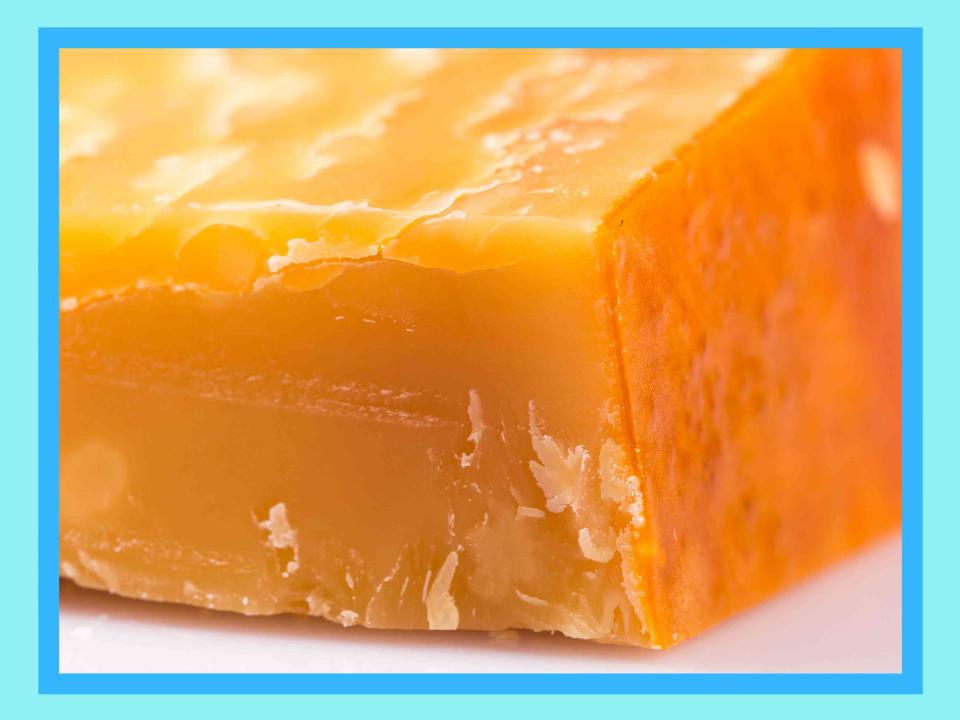What Are Those Crunchy White Bits On Cheese?
And are they safe to eat?

Allrecipes/Getty
Creamy, smooth, gooey, melty…these words come to mind when describing the flavor and texture of our favorite cheeses. But crunch? Where does crunch enter the picture? If you’ve ever enjoyed a nice cheese board, chances are you’ve tried a fancier aged cheese that has these delicate crunchy bits. So what produces this crunchy texture? And is it a good thing? Read on to learn more, then impress your friends at your next party with all your cheesy knowledge.
What are Those Crunchy Bits on Cheese?
This crunchy texture is specific to well-aged firm and semi-firm cheeses like Parmigiano Reggiano, aged gouda, and some English Cheddars. These cheeses usually age anywhere from one to three years. To understand how these crunchy bits come about, it’s helpful to understand both how cheese is made and how it transforms as it is aged. At the beginning, enzymes are added to milk to begin the acidification process. This means that lactose (the sugar in milk) is converted to lactic acid. Chains of proteins trap fats and proteins to form solids. These solids are pressed and shaped into wheels of cheese.
During the aging process, the cheese slowly loses its moisture. The enzymes in the cheese continue to work their magic, creating more lactic acid (what helps give the cheese its firm texture and flavor). Those protein chains, or amino acids, continue to form. Others, like the amino acid called tyrosine, begin to unravel, leaving crunchy bits studded throughout the cheese. The crunchy bits are more technically known as calcium lactate (and more widely known as cheese crystals).
What Causes Cheese Crystals?
Cheese crystals, or calcium lactate, are formed when the amino acid called tyrosine in a well-aged cheese begins to unravel. Why crystals? If you were to look at it under the microscope, the calcium lactate would have lacy, irregular shapes, just like snowflakes. Salt crystals are the same. This structure is what gives them their delicate crunch.
What Does It Mean When Cheese has Crystals?
The white crunchy bits in cheese are a sign that it has been aged for a minimum of one year. They are also a sign that the cheesemaker has done everything right to create the perfect aging conditions—controlling the temperature and humidity, rotating the wheels for even exposure to the air, and ensuring nothing contaminates the cheese. The crystals contribute to the overall savory flavor, called umami, and texture of the cheese, creating a truly heavenly bite.
What is the Best Way to Enjoy the Crunchy Bits in Cheese?
The best way to taste the cheese crystals in an aged cheese is to enjoy it as is, rather than cooked or grated. Wide, thin slices will make the crunchy bits more apparent on your tongue. Aged cheese instantly turns up the volume in simple dishes. Try adding shaved Parmigiano Reggiano to a classic Caesar salad or slices of aged English Cheddar to a tomato sandwi
Read the original article on All Recipes.


